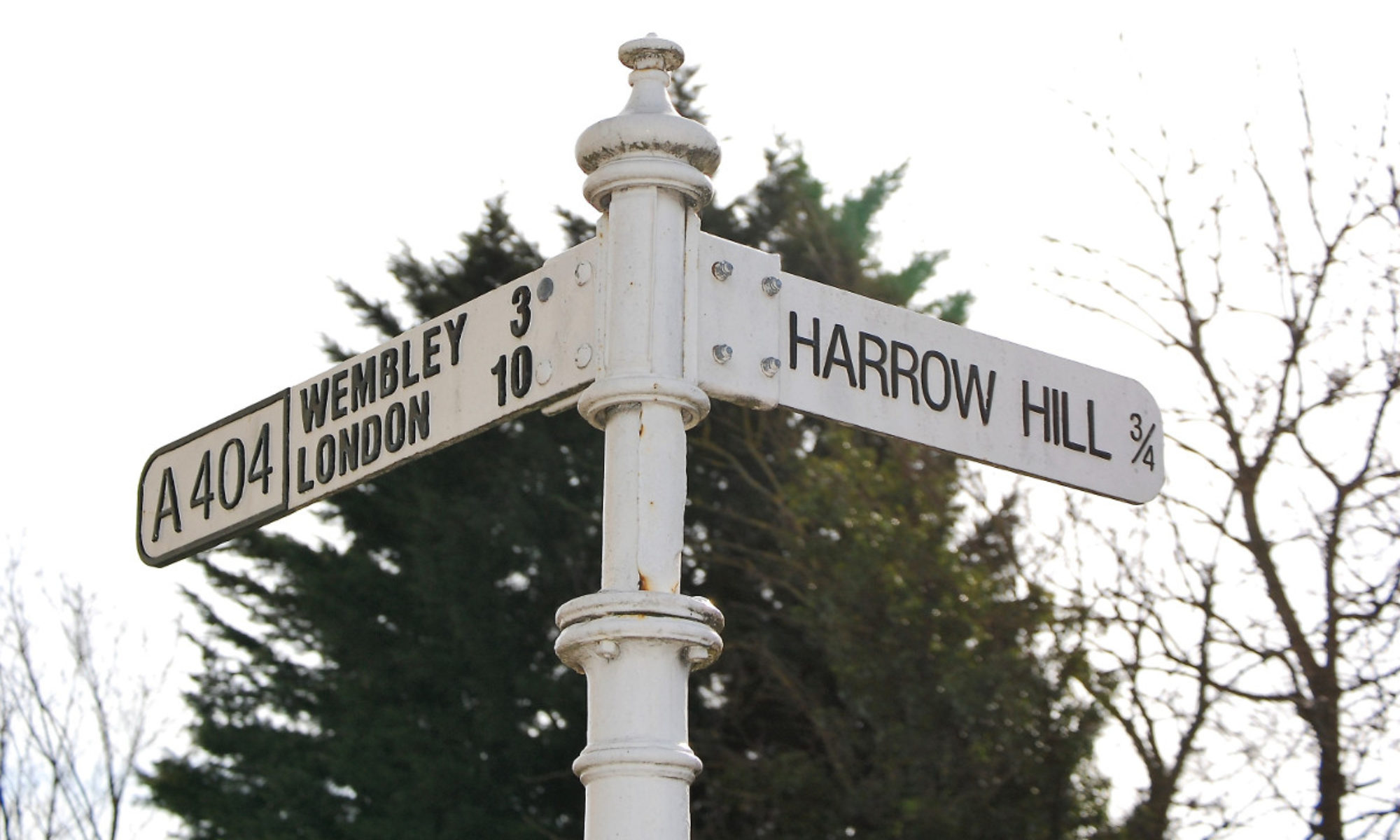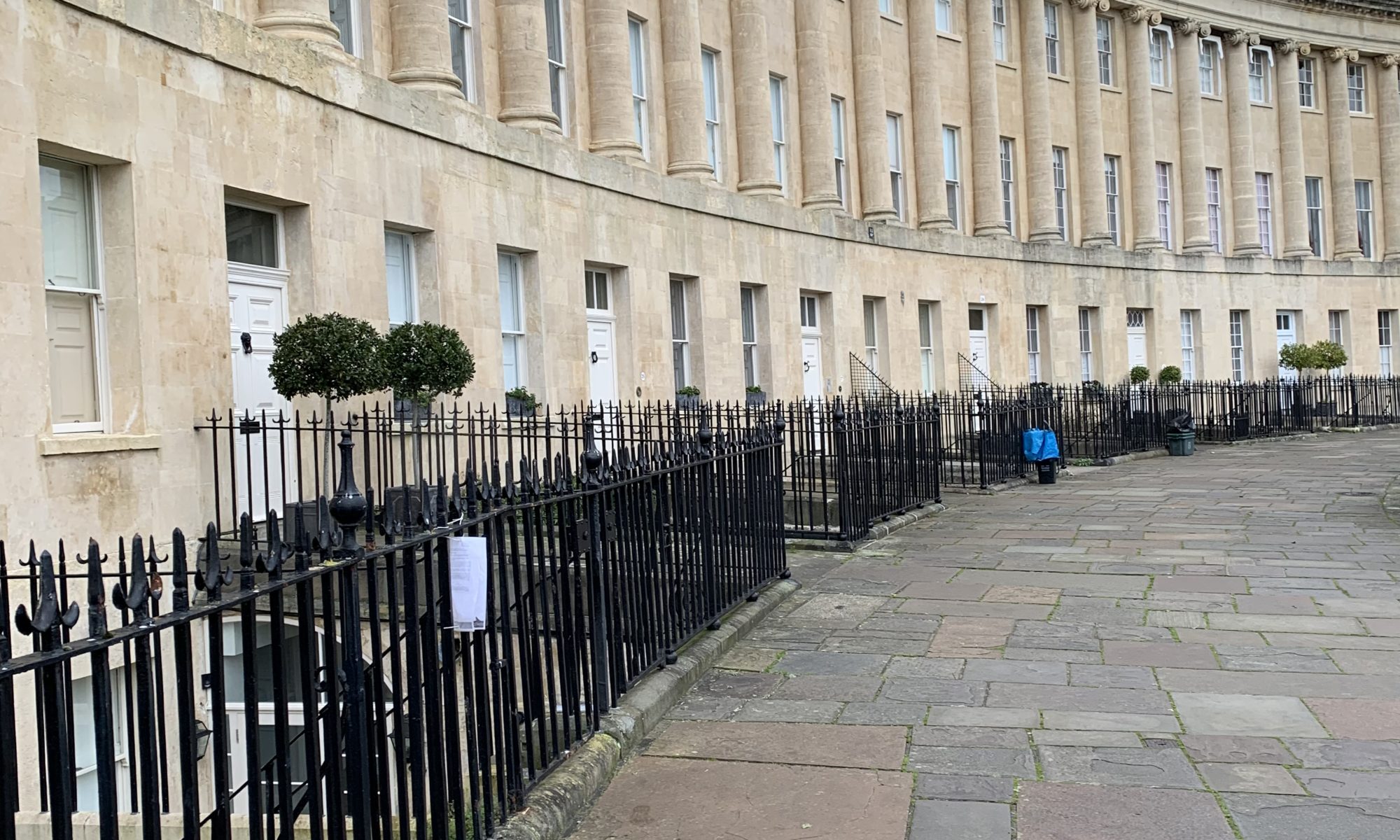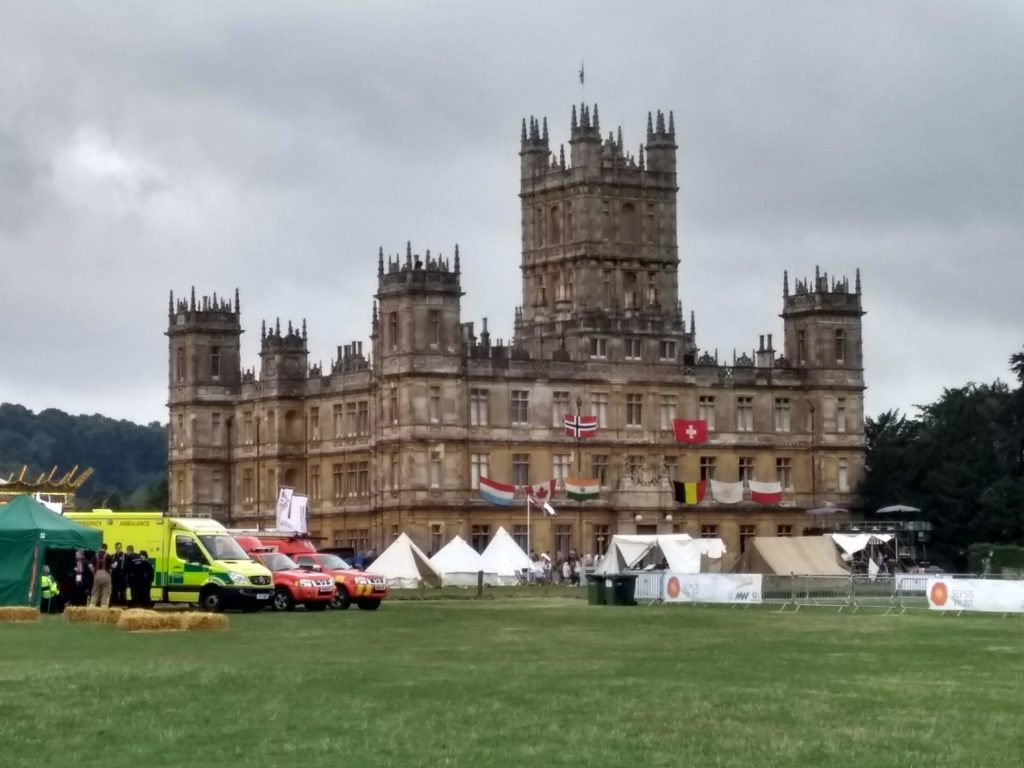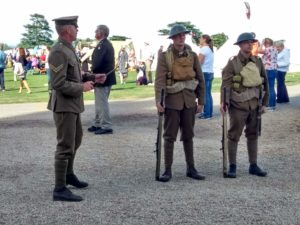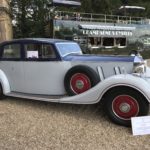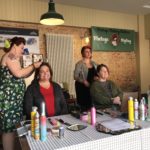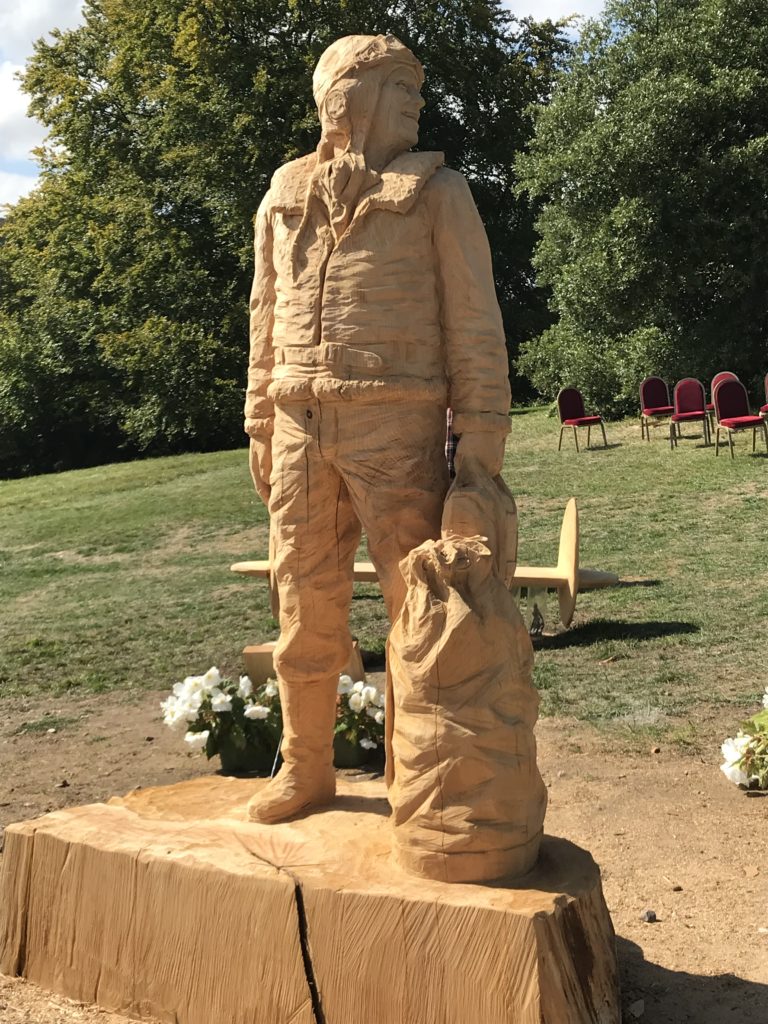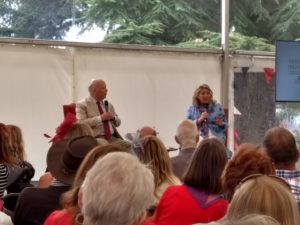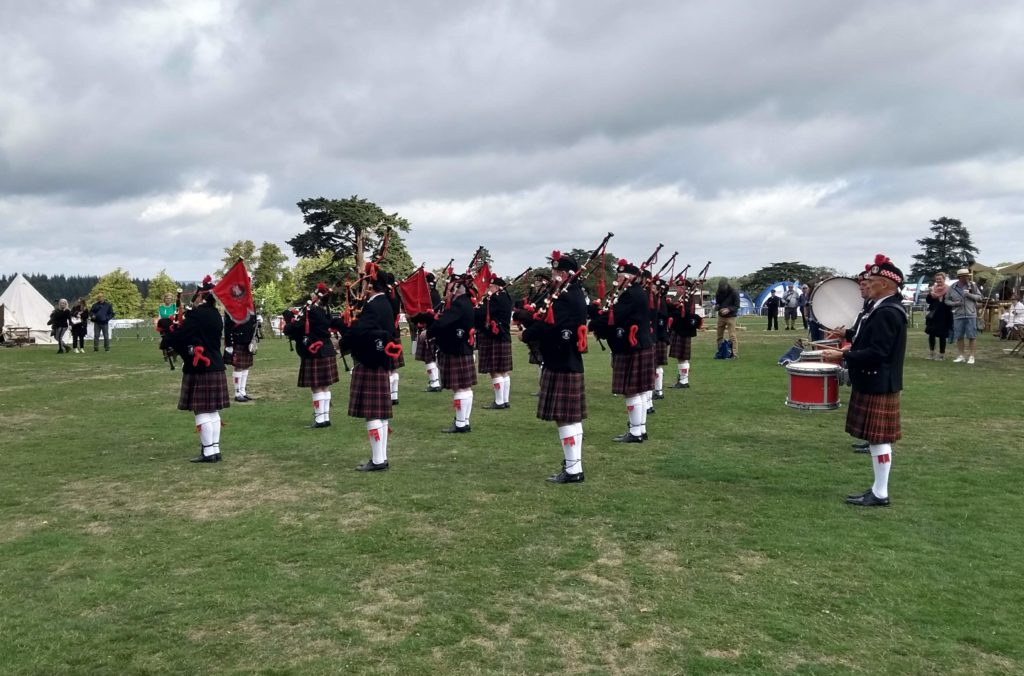Bath is either a three-hour drive or a 20-minute drive followed by a 90-minute train ride from our house. We opted for the train ride four our visit to Jane Austen’s Bath.
After getting up early on a cold Saturday morning in January, we drove to the station in the dark. We parked in a nearly empty
There’s a lot to see and do in Bath, and we wanted to fit as much in as possible so I had created an agenda for our day. We left the train station and went next door to the bus station and hopped on a bus to get to Royal Crescent Park.
Royal Crescent
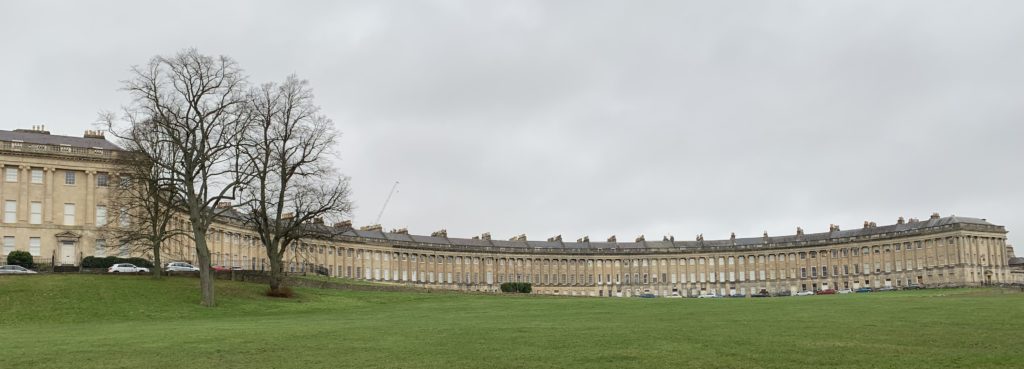
The bus dropped us off a block below the park. We walked up the public footpath between the houses and through a car park. At the top, we emerged to a splendid view of Royal Crescent (above). We walked to the western end to begin our walk along the length of the Crescent. People were out, but we were mostly alone as we walked along admiring the Georgian architecture.
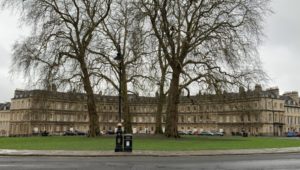
At the end of Royal Crescent, we walked the short block to The Circus, a circle of Georgian homes around a park. Adjacent to The Circus
Jane Austen Centre
The city was fully alive by this time, so we had to wait our turn for the official greeter at the door. The Centre itself is a thoroughly delightful tourist trap. The building itself has no relation to the Austen family, although Jane did stay at a home up the street during her first visit to Bath.
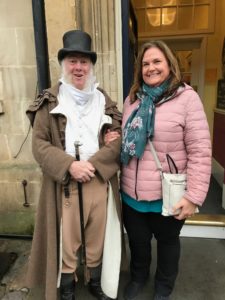
The Centre houses few items that date to Jane Austen’s time but many reproductions used in film adaptations of her books. Everyone working there was dressed and in character as someone from one of Austen’s novels. Our tour guide, “Mr. Wickham, please don’t hold that against me,” was entertaining and informative. Now,
After our tour and a browse of the gift shop, we were getting hungry for lunch. Although the Jane Austen Centre has a tea room, we decided to have lunch at the Assembly Rooms. Walking back, we passed the home where Jane stayed with her aunt during her first visit to the city in 1797.
Bath Assembly Rooms
Lunch was tea and cheese sandwiches and a shared piece of carrot cake for dessert in the cafe at Bath Assembly Rooms. We looked at the rest of Assembly Rooms before and after lunch and enjoyed taking photos with almost no one else around. January seemed to be a good time to go to visit Jane Austen’s Bath.
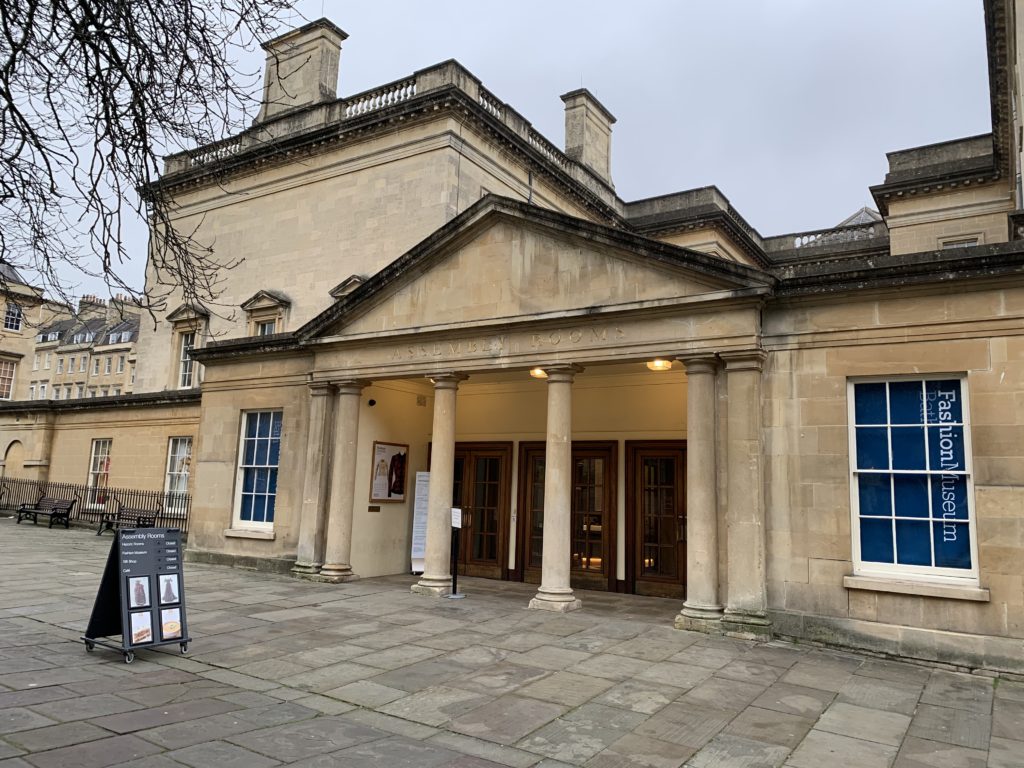
Bath Assembly Rooms 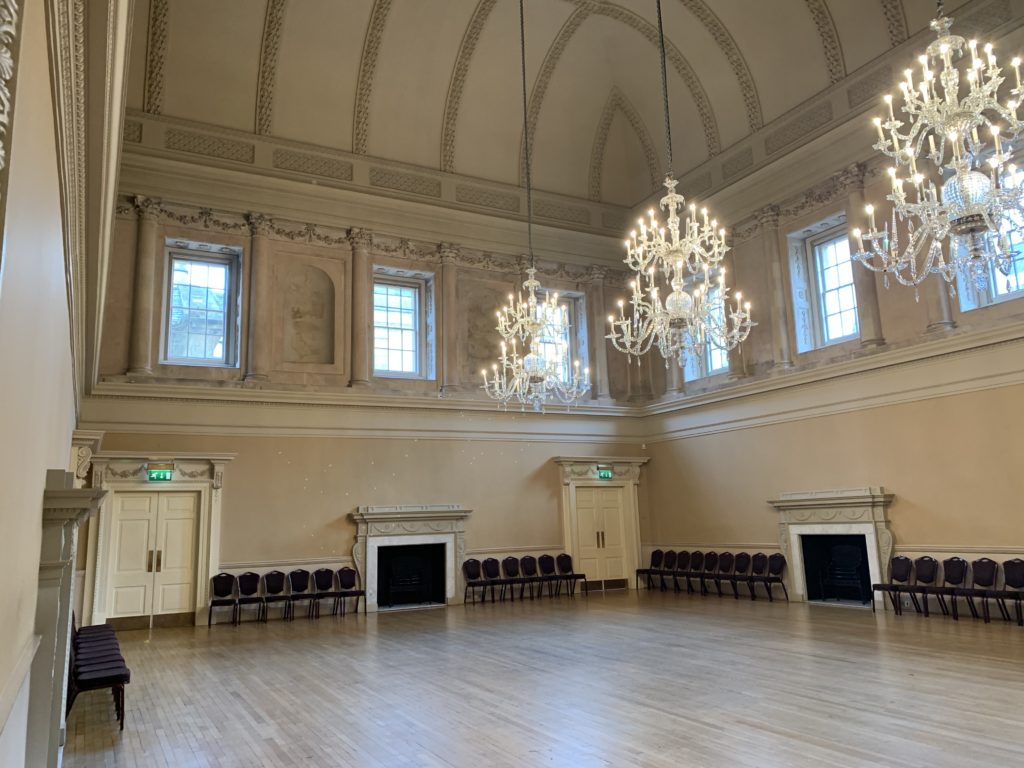
Tea Room 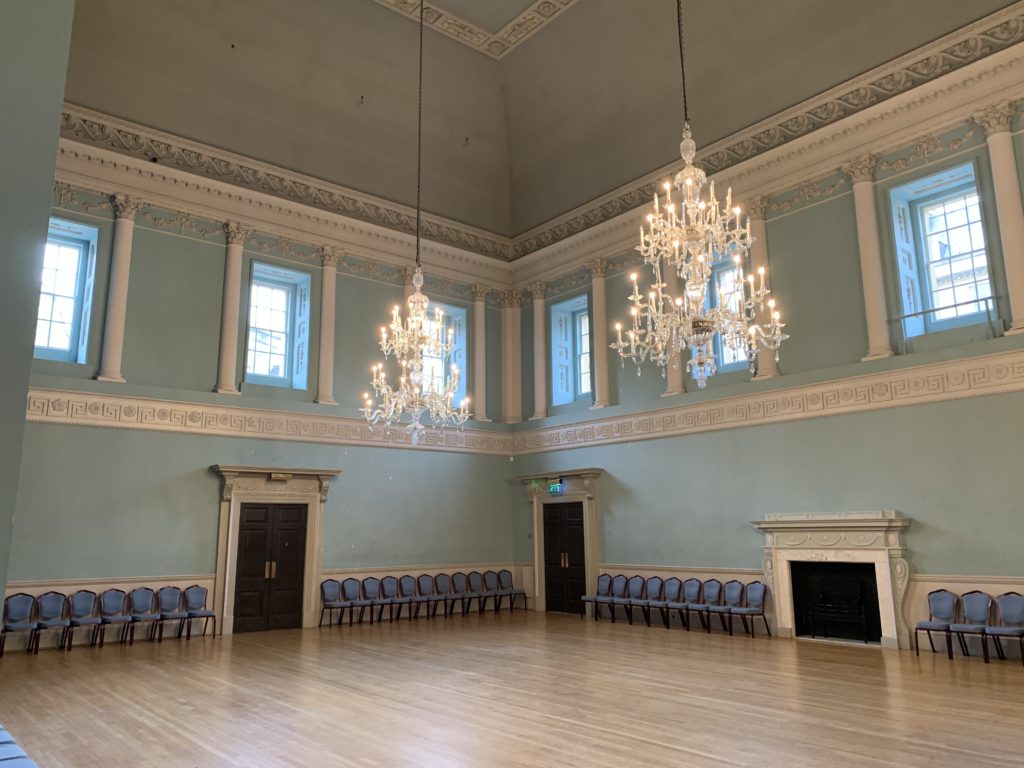
Ball Room 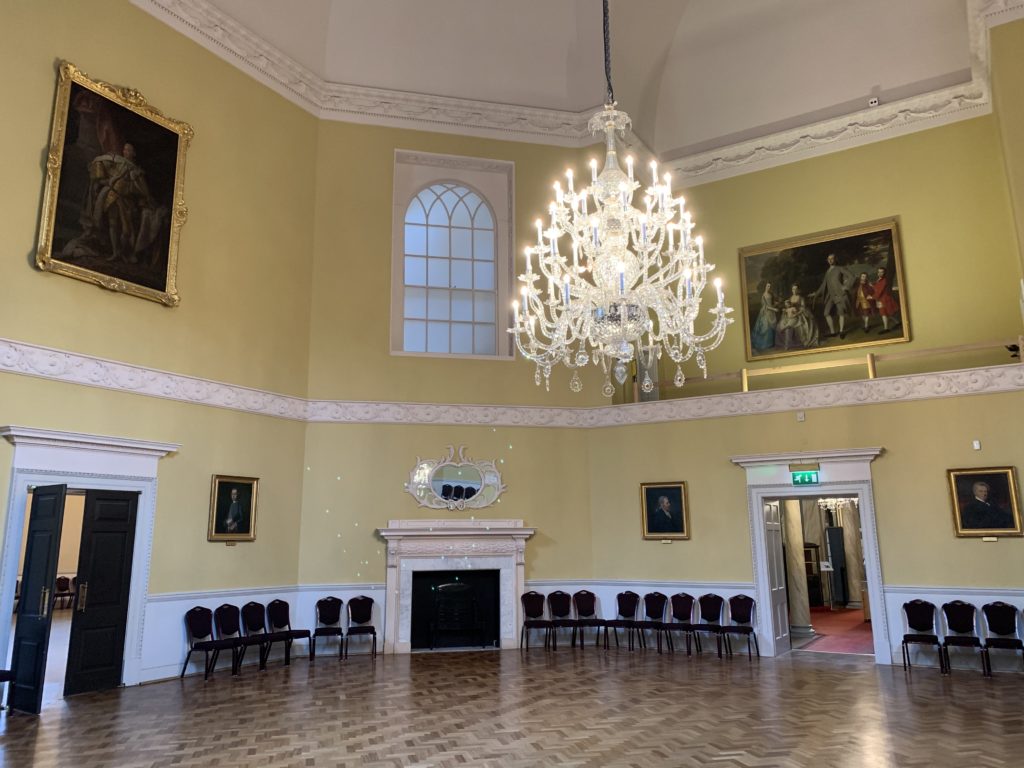
Great Octagon
It was almost magical to be in the rooms we’ve seen on screen so many times. Kurt refused to dance a country dance with me, but it still felt like we were truly in Jane Austen’s Bath.
From the Assembly
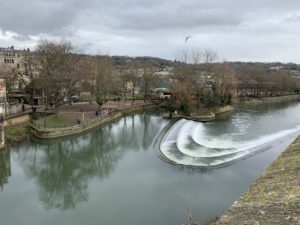
We crossed the street and walked through the Guildhall Market, the oldest shopping venue in Bath, to reach Bath Abbey. The market itself was interesting and I bought a souvenir tea towel for half the price we saw at any of the tourist hot spots.
Bath Abbey
After leaving the Guildhall, we crossed the street to avoid a group of Brexit protesters and walked the short distance to the Abbey. It is majestic, beautiful and old, and it was crowded. We photographed a few unique features including a dusty American flag with only 48 stars but didn’t spend a great deal of time there. I hate to say it, but once you’ve seen a few dozen grand abbeys, churches
Although, I did wonder if Jane ever attended services here when she was in Bath.
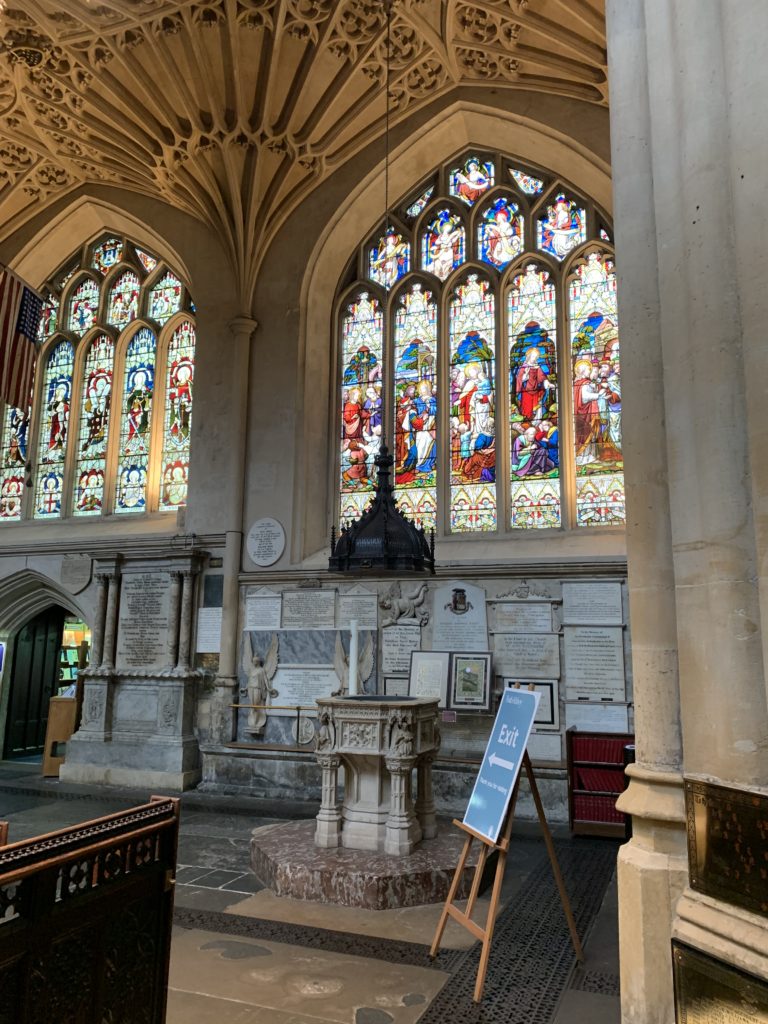
Stained glass and baptismal font at Bath Abbey 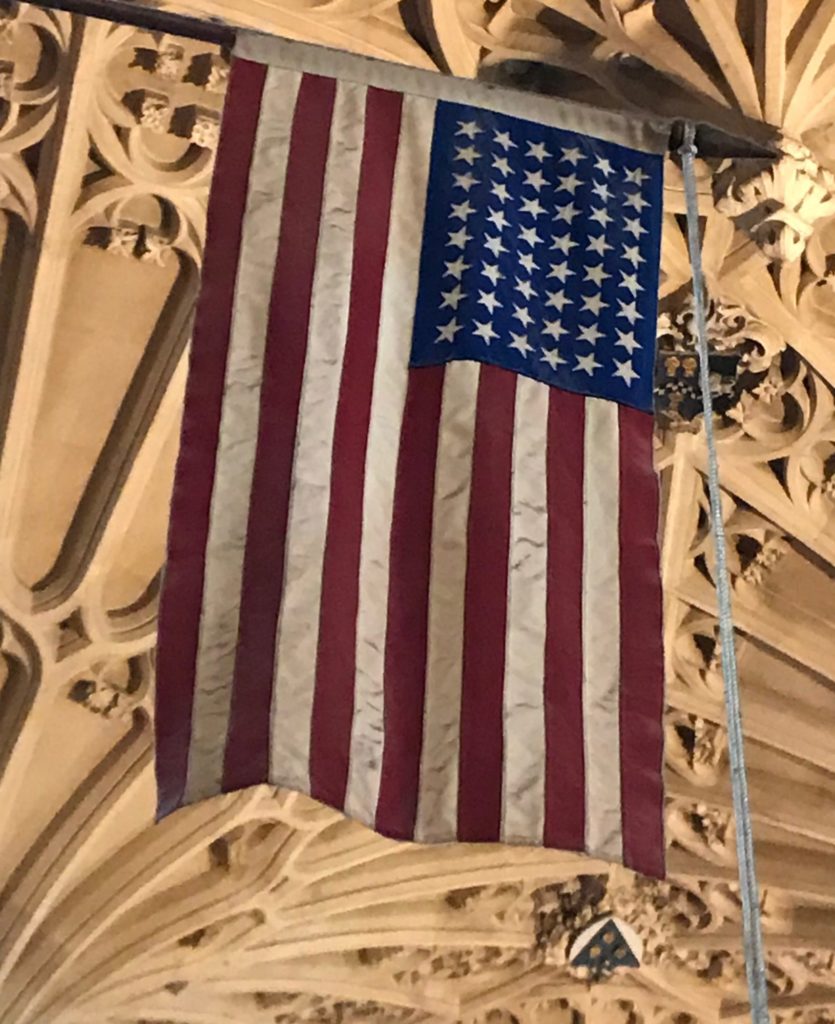
48 stars 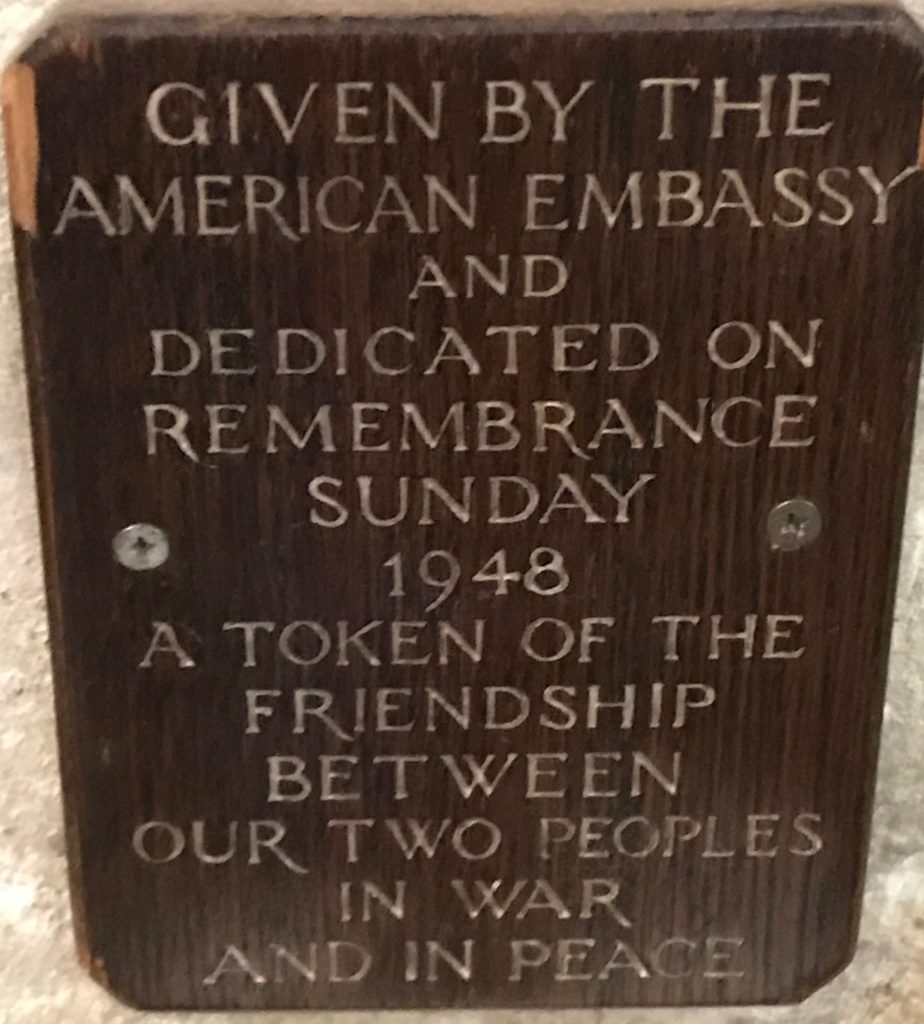
Allies 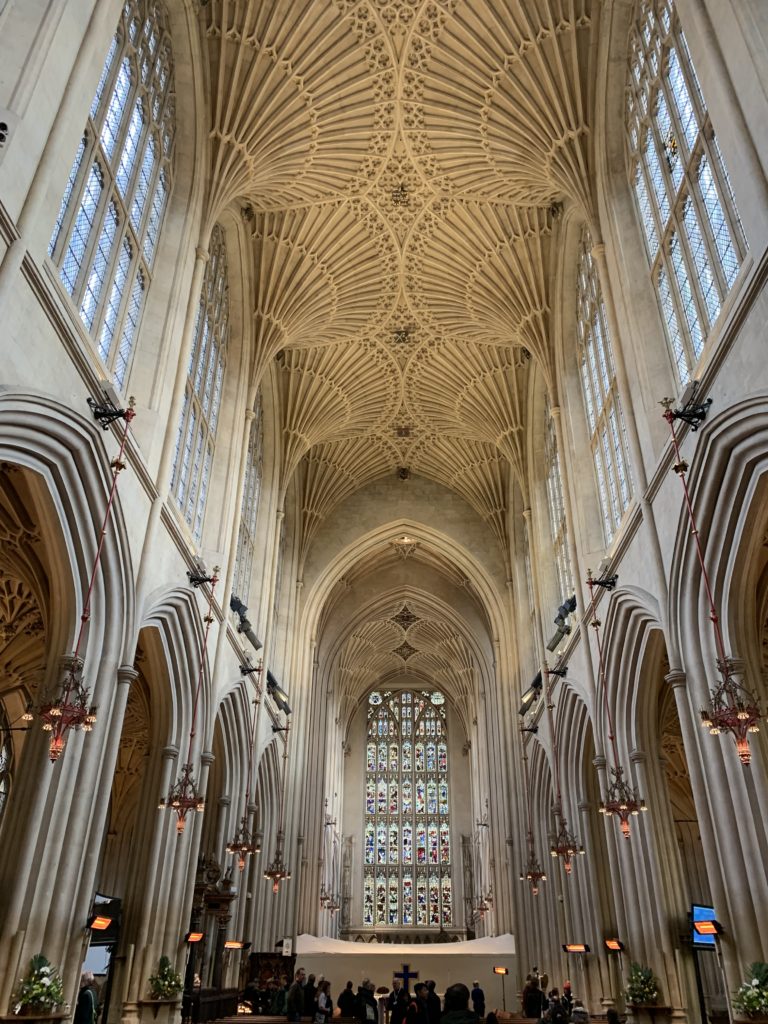
Bath Abbey interior
Roman Baths
The Roman Baths are next door so we headed over and were relieved to find the ticket line was short. That was the last easy thing about our visit. From the moment we left the ticket counter, there were people everywhere and most of them seemed blissfully unaware that other people were also trying to move through and see the Roman Baths.
We navigated around groups blocking access to the baths from the ticket hall. At the first area inside the baths, I was asked to move so someone could take a photo of their friend sprawled across the sign describing what was in that area of the baths. I stepped aside so they could get their photo and then moved back so that I could see the baths. Again, I was tapped on the shoulder and asked to move
I rolled my eyes and we moved on. About ten minutes later, when we were on the opposite side of the terrace, and that same group of tourists was still taking photos and monopolizing that same area. I stopped and posed to make sure I was in the background of at least one of their photos (#passiveaggressivephotobomb).
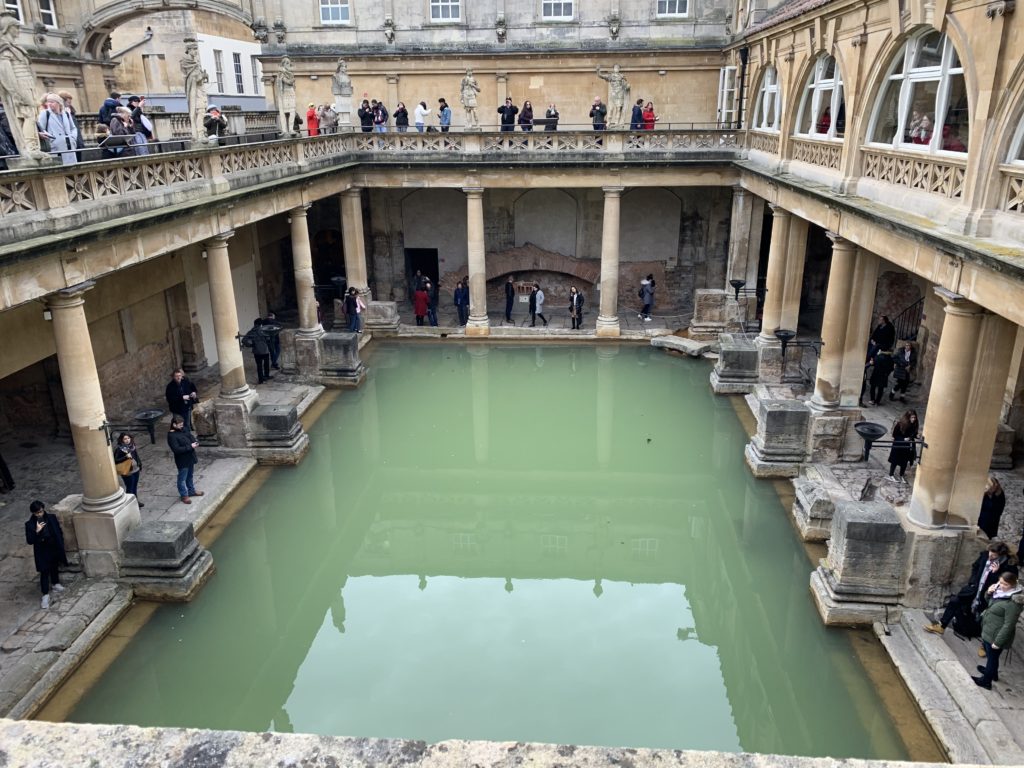
Terrace overlooking the Great Bath 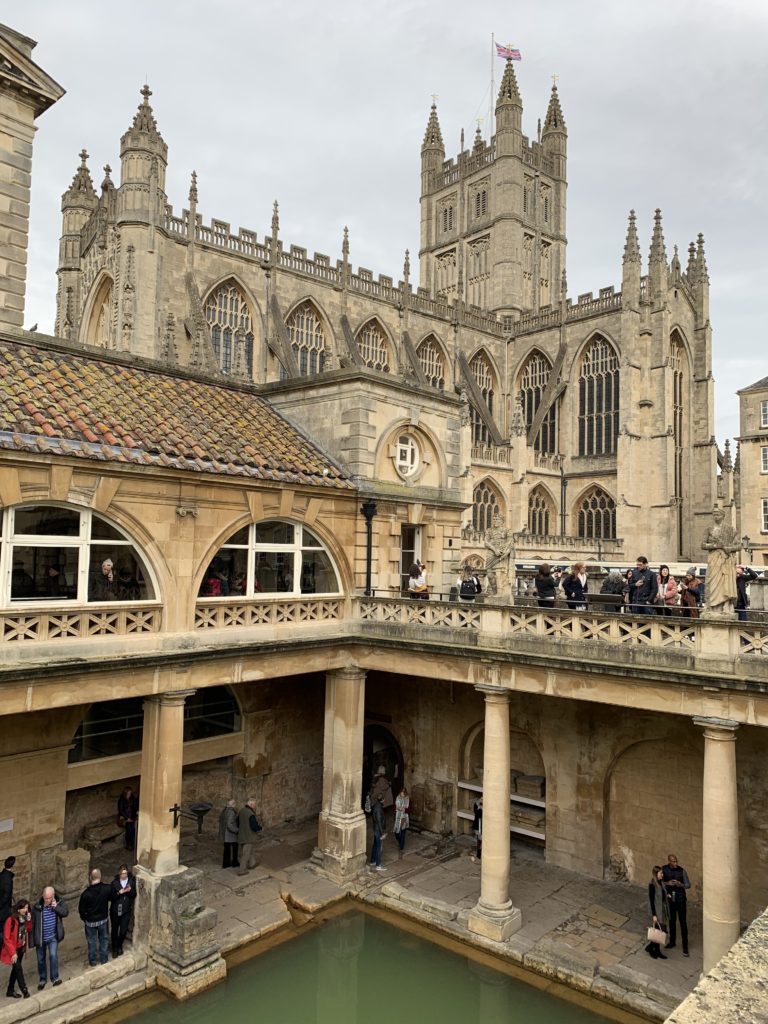
View of Bath Abbey from Roman Baths terrace 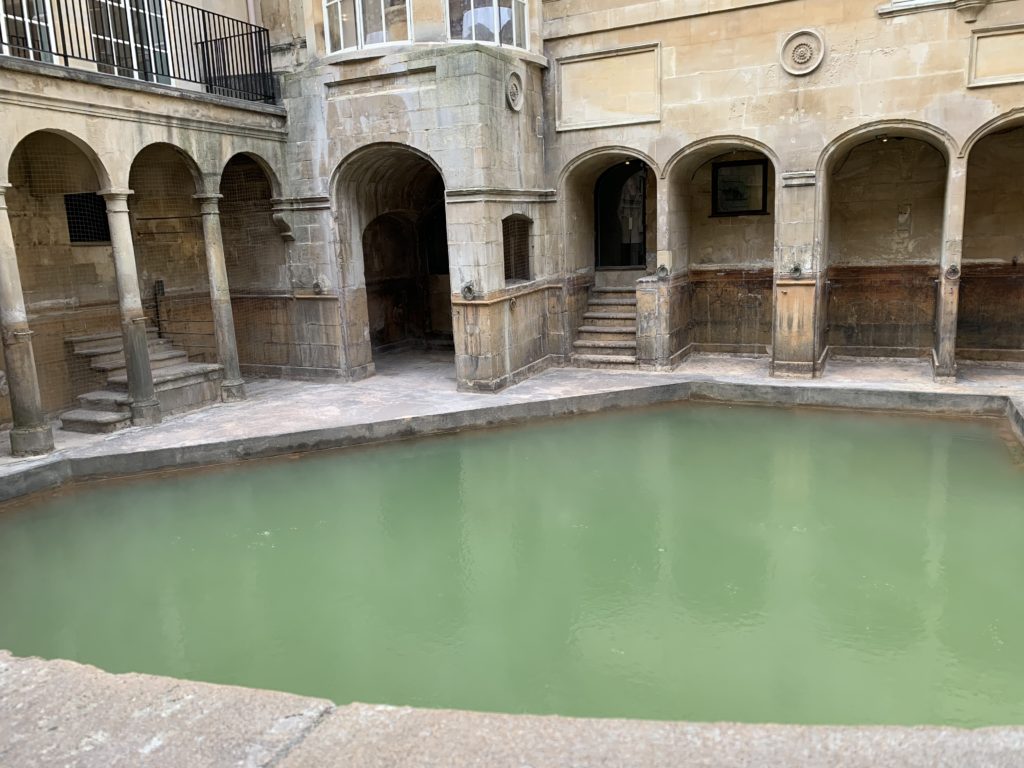
Sacred Spring, notice the bubbles 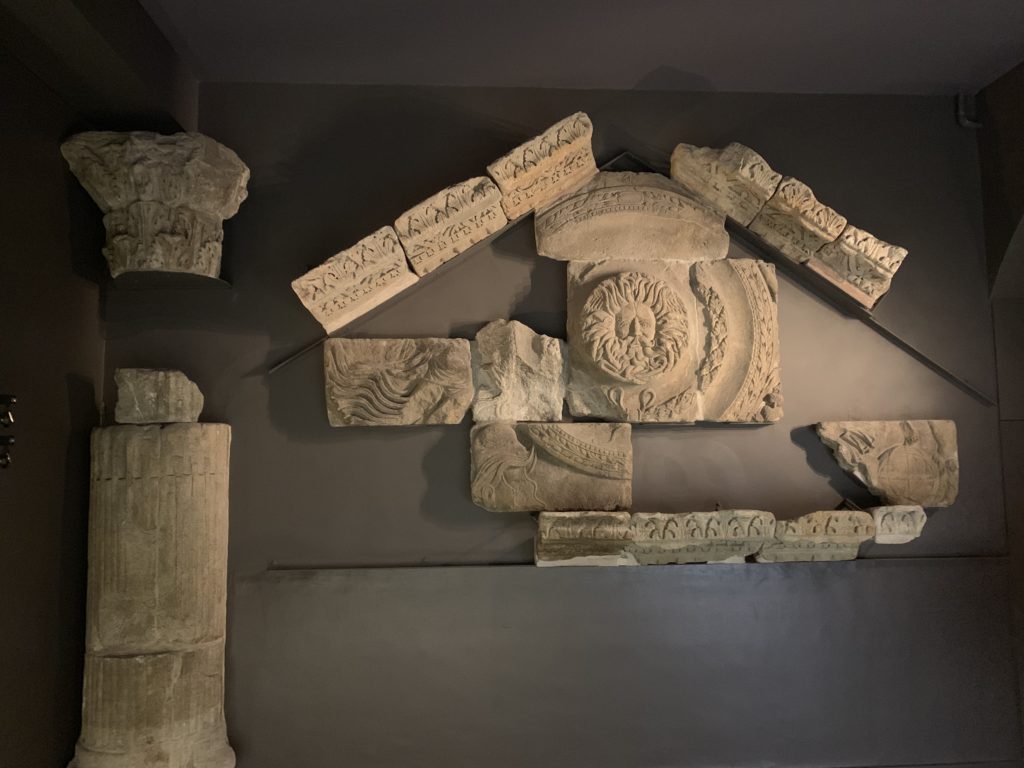
Remnants of the temple pediment
We moved through the rest of the baths amid a crush of people. Some areas were worse than others because of the layout of the ancient structure. Before long, we had both reached our maximum tolerance for crowds and hurried through the rest. Well, we hurried as much as we could with people stopping and standing in the middle of the path blocking anyone from getting through.
The Pump Room
After catching our breath outside, we decided to channel Jane Austen and have tea in The Pump Room. While we waited for a table, we observed a group of Anonymous-styled vegan protesters outside the restaurant. Who knew Bath was a hotbed of protesting?
We enjoyed a lovely Beau Nash-style cream tea. It included some of the best salmon we’ve ever had and of course, scones with clotted cream and jam.
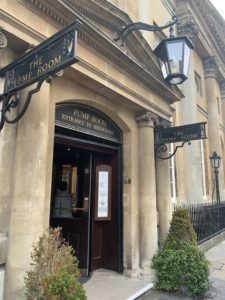
We especially enjoyed the pianist playing a mix of classics and modern pop. It became an impromptu game of Name That Tune. We recognized Abba, Andrew Lloyd Weber, and Disney songs. I wasn’t the only one singing along. After a while, a violinist and cellist joined the pianist for more delightful and surprising tunes. We can’t recommend The Pump Room highly enough for a meal or afternoon tea. Everything about our experience was excellent, even if it didn’t exactly feel like Jane Austen’s Bath.
Bath Buns
After tea, we headed to Sally Lunn’s for one of those famous Bath buns (who doesn’t need a snack right after tea?). If you haven’t heard, Sally Lunn’s is where Huguenot Sally Lunn created the first Bath Bun in Georgian Bath. It’s in one of the oldest houses in Bath. We shared an amazing lemon curd bun and coffee in the cozy ground floor dining room.
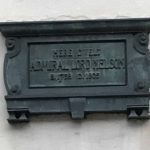
We had a little time left before our return train, so we walked to the bridge below Pulteney and took photos of the city in the fading light. Then, the
Unfortunately, our train ride back did not go as smoothly as the trip out. Our train was delayed by a signal failure and the same failure caused our connecting train to be canceled. We had an impromptu dinner at Reading Station before another train was put into service, and we were home before eight that evening.
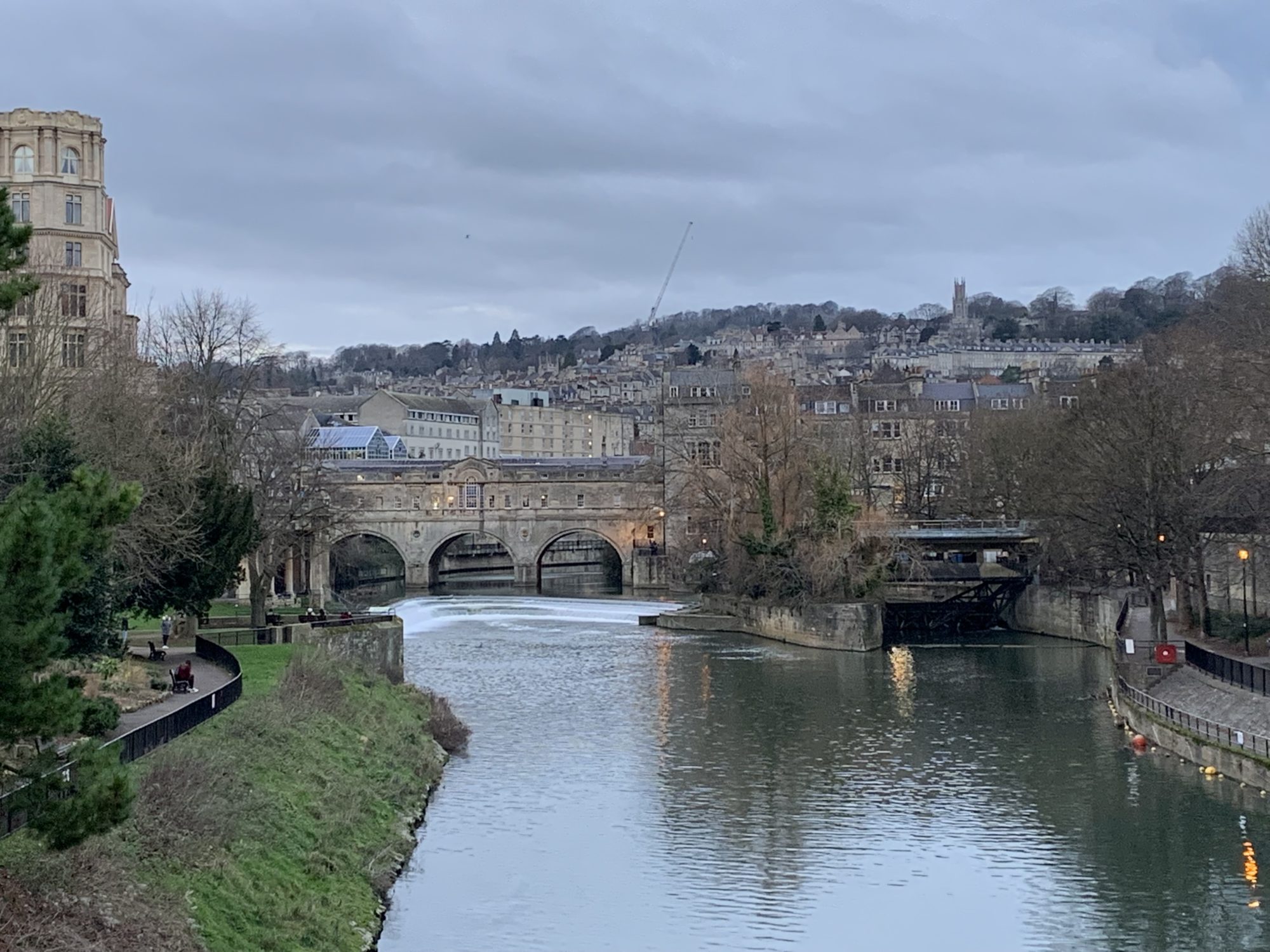
It was a full day and although we did everything we planned and a little more, we still haven’t seen everything there is to see. It’s a wonderful day trip that we’ll be making again, and we recommend it. We will definitely make another visit to Jane Austen’s Bath.
If you’re visiting London, the high-speed train to Bath departs frequently from Paddington Station, doesn’t require a change in Reading and still takes only 90 minutes. It’s worth the trip.
